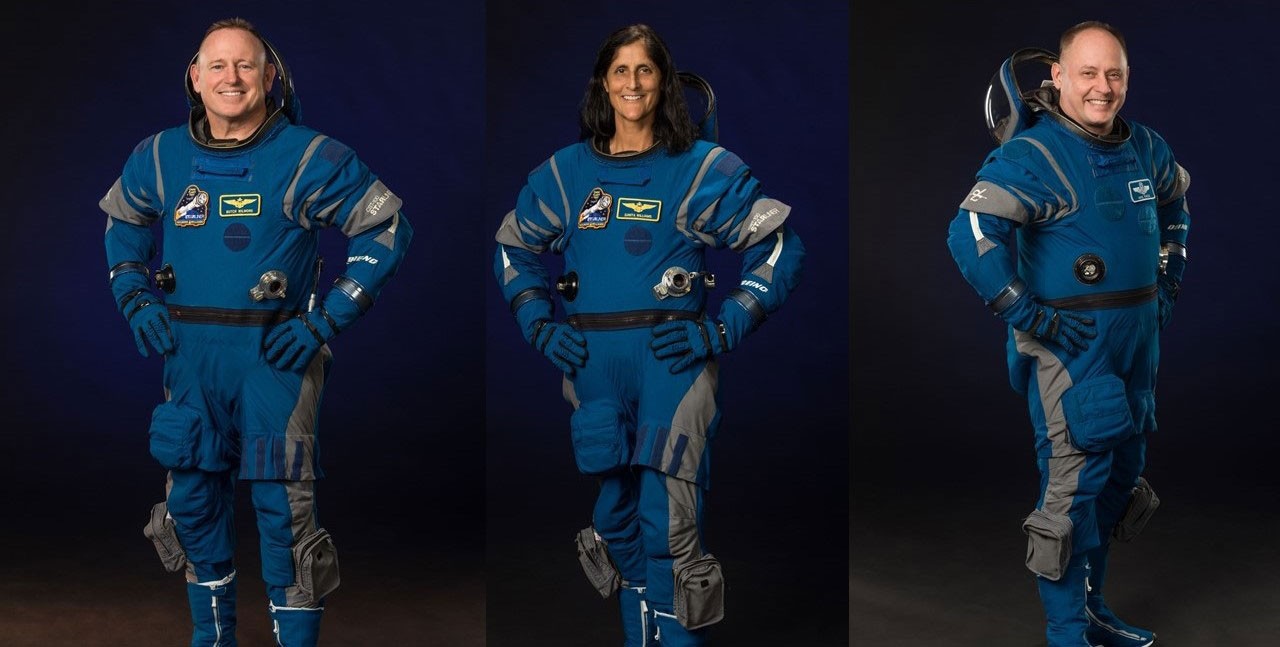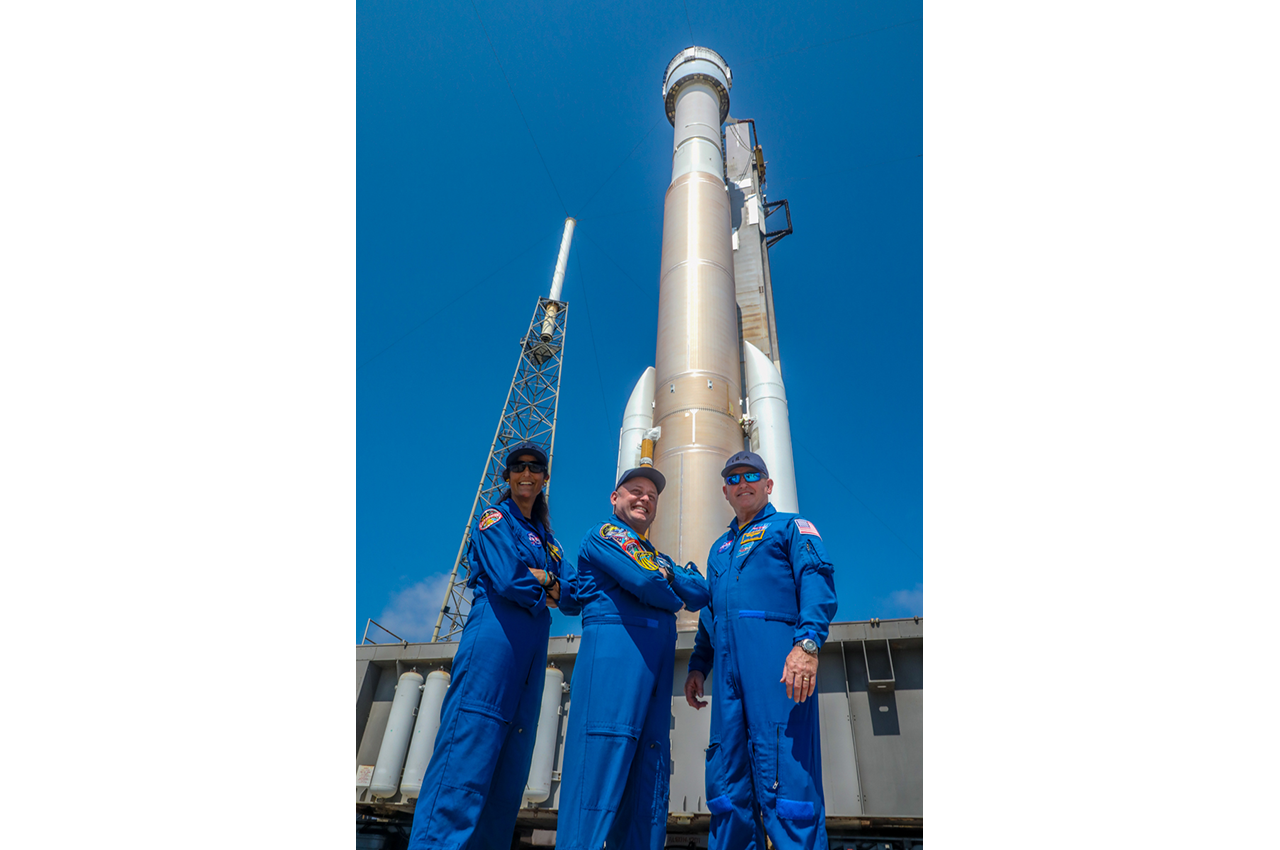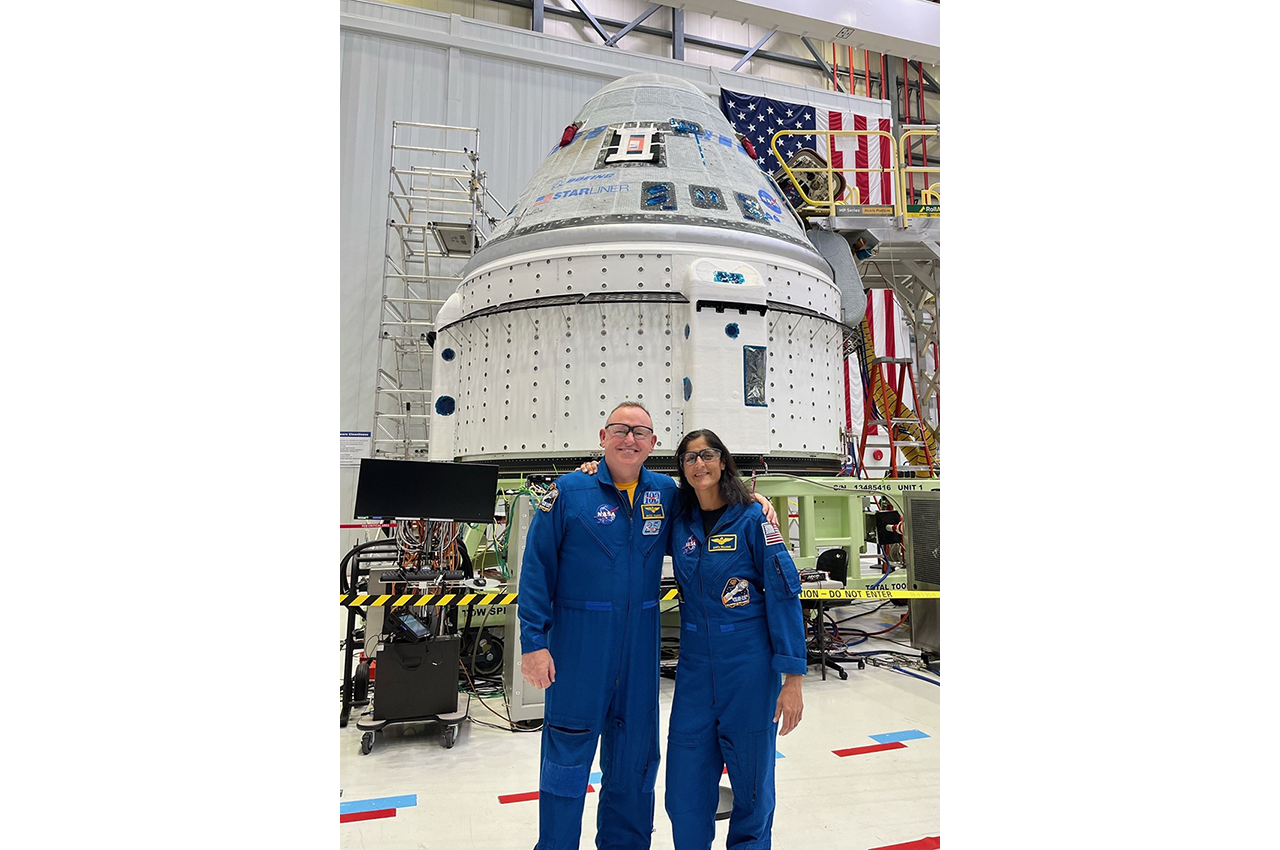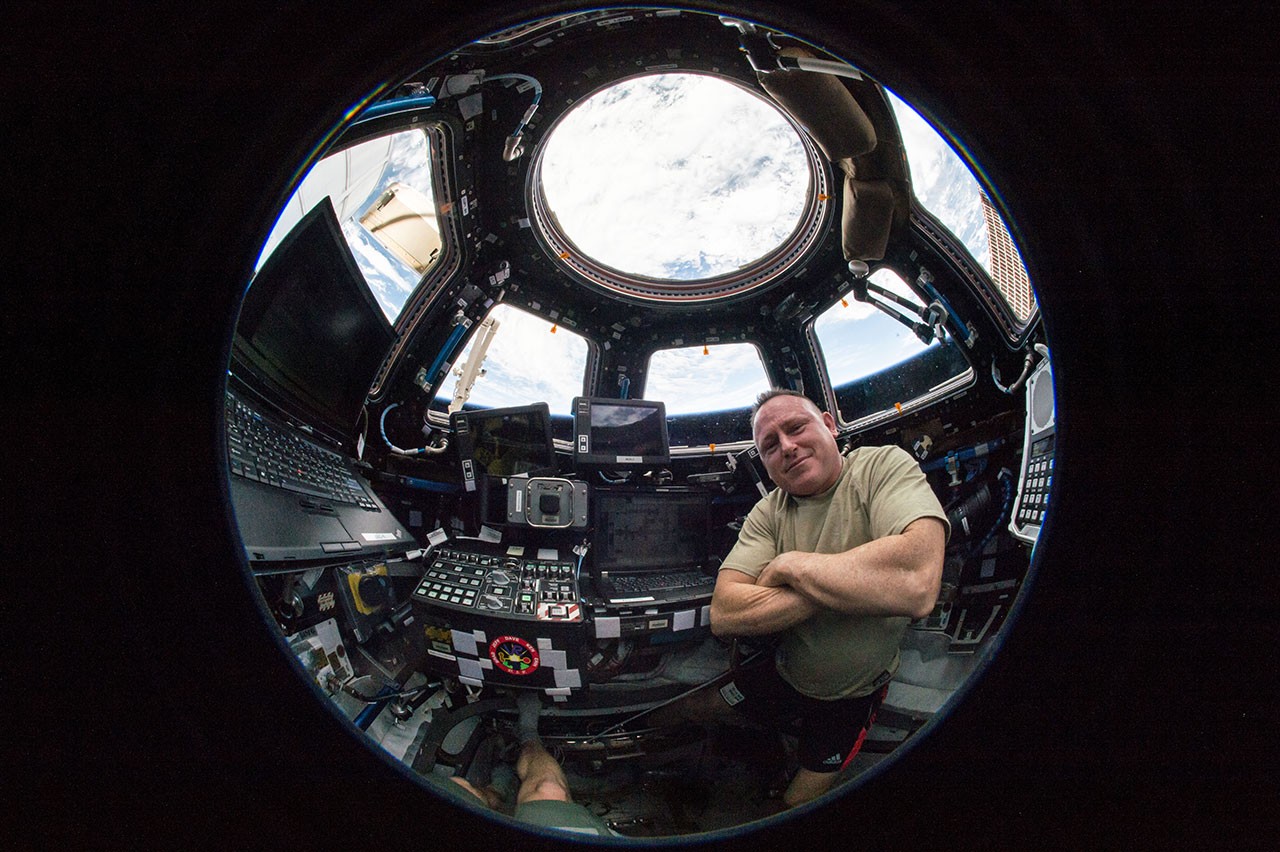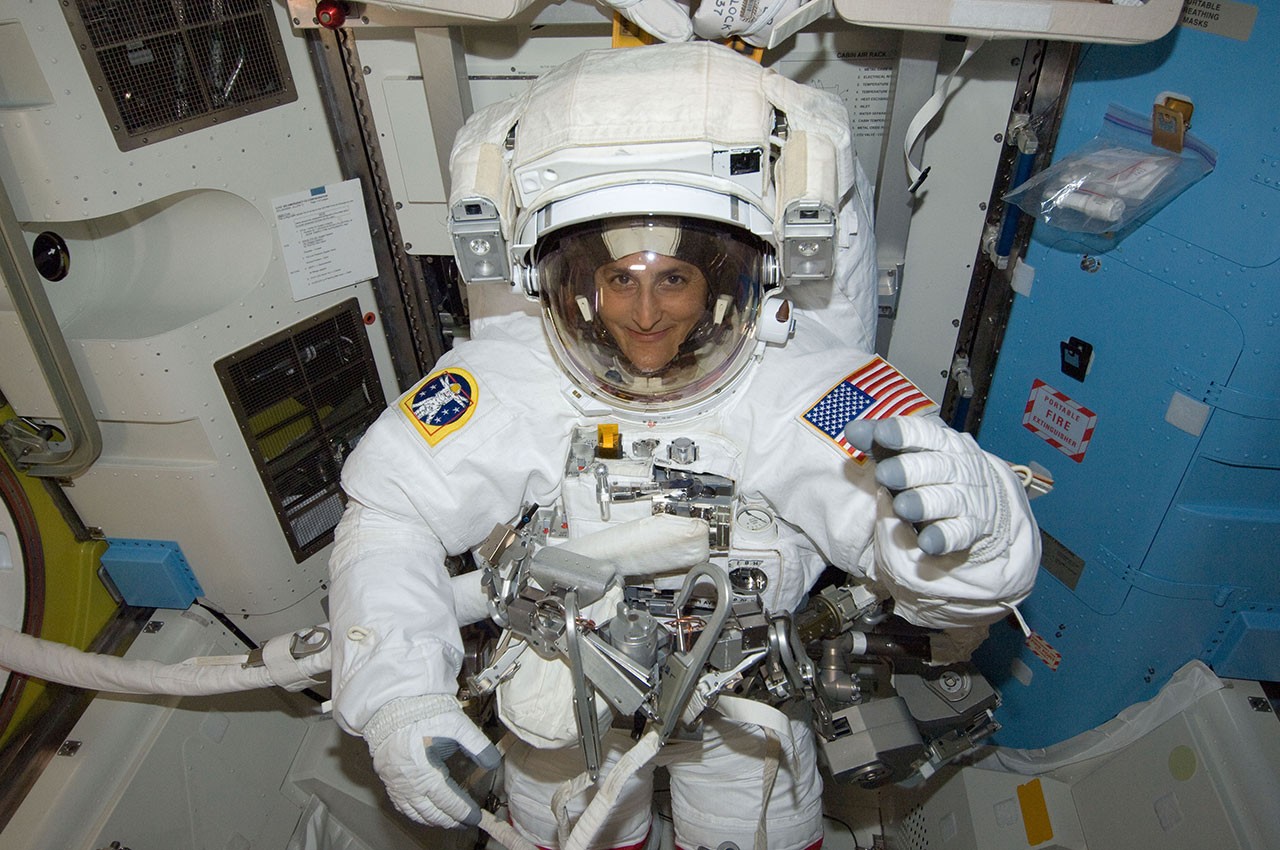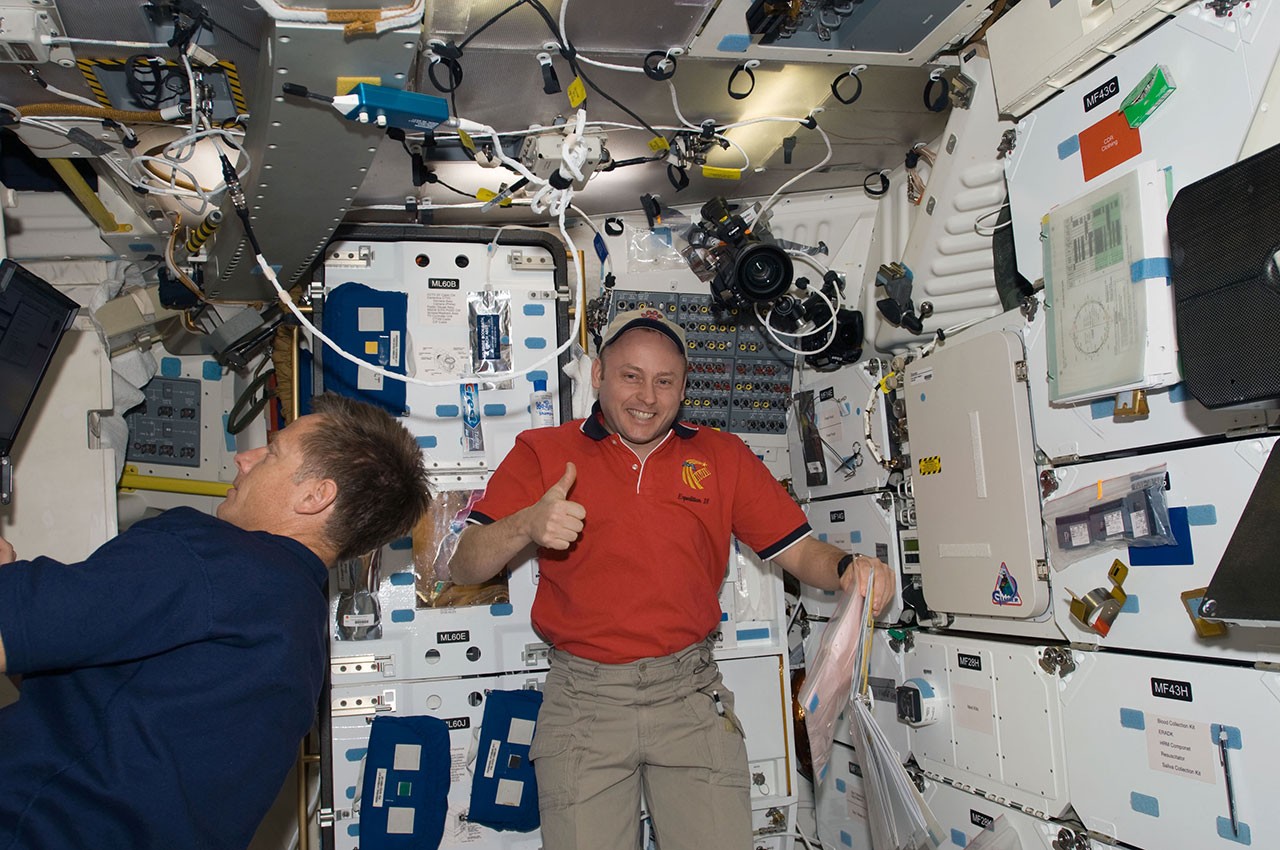NASA astronauts Butch Wilmore and Suni Williams are poised to make history as the first people to fly on a Boeing-owned and operated spacecraft when they launch to the International Space Station (ISS) on a flight test.
The two astronauts will make history again when the mission ends after about a week or two when the CST-100 Starliner they are aboard descends under parachutes to a landing zone in the deserts of the American southwest. Traditionally, American-made capsules end their missions in the water. Boeing opted for a design that will touch down on land rather than splashing into the ocean in order to ease parts of the recovery process.
Wilmore and Williams, both veteran astronauts who flew long-duration missions on the station, provided numerous insights into the spacecraft development as they trained for this flight.
“We are very in tune and familiar with all the required operations, including the detailed orbital mechanics involved in maneuvering spacecraft in space,” Wilmore said. “We’ll be ready to fly, test and evaluate all aspects of this spacecraft from launch to landing.”
Although Boeing previously built several human-rated spacecraft for NASA, the company handed them over to the agency rather than operate them. With the Starliner, NASA contracted Boeing to provide a service to take crews to and from the orbiting laboratory.
The flight test, formally known as the Crew Flight Test, or CFT, will perform the same tasks of a crew rotation mission in order to certify the new spacecraft to carry people to the station under NASA's Commercial Crew Program.
Having multiple spacecraft of different designs is valuable for NASA for the flexibility it provides in serving the space station, which has been in operation since 1998 and supports almost every field of scientific research.
Astronaut Mike Fincke is the scheduled backup spacecraft test pilot if either Wilmore or Williams is not able to fly. Fincke is also assigned as pilot of Starliner’s first crew rotation mission, known as Starliner-1, following CFT, along with NASA astronaut Scott Tingle and Canadian Space Agency astronaut Josh Kutryk.
Wilmore, as the first to command Starliner, said the opportunity to be involved with the preparations to launch and fly the first crew flight of a spacecraft is one that only a few number of individuals have ever had the chance to be a part of.
“It’s just a rare opportunity — you almost pinch yourself and say, really, we’re the ones who get to experience this along with the numerous professionals who are working passionately toward the success of these missions,” said Wilmore, a retired Navy captain who was selected by NASA to be an astronaut in July 2000. He has spent 178 days in space with four spacewalks. His last mission ended in 2015 after six months as commander of the space station.
Williams, also a retired Navy captain, was selected by NASA as an astronaut in 1998. She has been on two space missions with 322 days in space and seven spacewalks. Both times she set world records for female spacewalks and today ranks second.
“Whenever you leave the space station you think, will I ever get to come back? Having that opportunity is priceless,” Williams said. “It’s amazing to be able to go back and work for the International Space Station Program as well as the Commercial Crew Program as Starliner opens doors for more and more people to go to space.”
Fincke, a retired U.S. Air Force colonel who was a flight-test engineer, became an astronaut in 1996. He has spent 381 days in space with nine spacewalks and at the time held the American record for the most time in space. He’s been working on Starliner since its early stages, supporting and developing NASA’s Commercial Crew Program in 2012 after the shuttle program ended, including as assistant to the chief in the astronaut office in Houston.
“This is a special time in life because a new spacecraft doesn’t come along except for once in a lifetime,” Fincke said. “There is something special about the first flights and it’s a big honor, but it’s also a lot of responsibility to be able to ensure that we get certified so that the astronauts who follow us will have safe missions.”
All three at different times have commanded expedition missions at the space station and have conducted spacewalks. While the three have never been on the station at the same time, they’ve known one another for decades. They’ve also been training together in various combinations with the Starliner team in simulations and mission dress rehearsals in the event Fincke has to replace one of the crew before launch.
“We’ve learned to work together as a crew of three and various versions of crews of two,” Fincke said.
Blending automation and manual control
The new generation of crewed spacecraft has turned in large measure to automation to fly the complex and precise rendezvous patterns to safely dock with the space station.
Equipped with complex sensors and fast-acting flight computers, today’s spacecraft are capable of doing the work previously requiring a commander and tightly coordinated with the pilot and engineers in addition to ground controllers.
Boeing opted to retain a set of controls familiar to astronauts as an ability for manual control, meaning that if there is a need, the commander can take over the decisions from the flight computers and make the maneuvers.
“It’s in the middle of total automation versus very hands-on. Starliner is a happy medium of both,” Williams said. “This spacecraft has hand controllers so we can fly it like pilots are accustomed to in aircraft.
“We can be precise in how we fly it, which is nice for a spacecraft,” Williams said. “When we want to fly the very tight parameters for docking to the space station, we are able to repeatedly be within those parameters.”
For the Crew Flight Test, the astronauts will be testing various systems. At different points of the flight test they will take control and fly the spacecraft and conduct manual maneuvers. For example, they will point the solar arrays, which are on the bottom of the spacecraft, toward the sun on the way to the space station and will confirm backup controls while undocking and departing the ISS prior to landing. While docked to space station, they will also transfer some cargo and test some emergency equipment on the spacecraft, including an emergency breathing apparatus.
“It’s a test flight. We are doing things that future crews will not do as we check out the spacecraft and its various capabilities,” Wilmore said.
How the crew describes one another
With about 24 hours between launch and docking to the space station, there will also be some down time. Williams joked she may even ask Wilmore to sing. He and his family are fans of musicals and he enjoys film soundtracks — or, as he describes, “great background music that strikes your emotion as you look at a scene.” He plans to have some music playing on his way up.
Wilmore and Williams first met while in the Navy. Though Williams was in the U.S. Navy Test Pilot School after Wilmore graduated, he was still at the center in Patuxent River, Maryland. They both have been test pilot school instructors.
“Flying is about compartmentalization, focusing on what you need to focus on, while being aware of the other factors that are out there, but being able to process all of that in real time and proceed forward and continue,” Wilmore said. “That’s obviously something that helps you well because in spaceflight if everything goes great you’re just sitting there watching and observing and enjoying the ride, but it’s when things don’t go right, which is what we train for, that you have to remain poised and fall back on your preparation.”
“She’s highly competent, motivated, personable and highly capable. That’s the type of person you want to share a first flight with,” Wilmore said about Williams. “There are certain things I rely on her for that I absolutely do not put a brain cell toward because she has it — and perhaps she does the same with me. Such trust is required in this business.”
Williams in turn describes Wilmore as a consummate professional. Having also flown together in T-38 jets, she has total trust in him and in his capabilities. “We trust each other in the cockpit. I know what he’s going to do. We know what each other is thinking,” Williams said. “We feel super-comfortable.”
She said they both take on a general approach to a mission rather than being super-detailed, which allows them to focus on the big picture of CFT. Fincke, on the other hand, is more detailed-oriented, she said, which helps her and Wilmore understand the programmatic and technical side of the spacecraft and mission.
For more Starliner highlights, follow @BoeingSpace on X, formerly known as Twitter, starlinerupdates.com and the CFT mission website.
By Deborah Circelli
